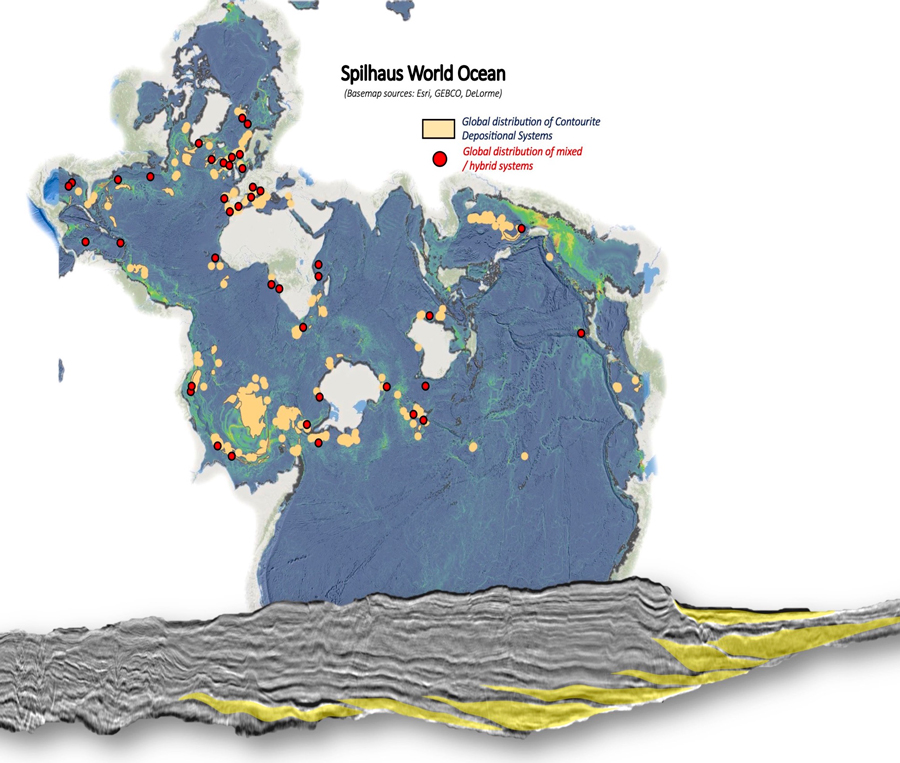F. Javier Hernández-Molina, Karyna Rodriguez & Neil Hodgson
This 3-day conference brings together diverse experts working on modern and ancient turbidite, MTDs, contourite and hybrid/mixed systems in order to improve the present-day knowledge, models and predictive power.
Sediment gravity flows and along-slope bottom currents (contourites) are the two main deep-water sedimentary processes shaping the continental margins and controlling the stacking patterns of their sedimentary successions. Depending on which one of these processes dominates, either a pure mass transport deposit (MTD), turbiditic or contourite depositional systems develop. But, when these processes interact each other, a hybrid or mixed depositional systems are generated. These hybrid systems are characterized by a wide spectrum of systems dominated by either along- or down-slope processes forming morphological features and deposits which deviate away from end-member models. These hybrid systems have only just been recently identified but due to their economic importance proven by recent significant discoveries (Coral and Mamba Fields, Mozambique and Jubilee Field, Ghana) they have begun to be studied in more detail.

Examples of hybrid / mixed depositional systems have been described in the offshore of Mozambique, Uruguay, Brazil, Argentina and Antarctica. In spite of these examples and their importance, there is a lack of knowledge about these systems themselves and the nature of processes interaction at the base of their origin. Similarly, the role of bottom-currents in the redistribution and reworking of deep-water sediments forming contourite systems, has been clearly underestimated. The diagnostic criteria to identify them at the facies and seismic scales in relation to sediment gravity flows deposits is still missing and the paleoceanographic implications are unknown. The interaction of processes promotes the deposition of clean sandstone deposits as a result of vigorous bottom currents, or due to the reworking of overspill sediments in both canyons/channels and inter-channel areas, which have renewed interest and attention from both academia and the exploration industry which should result in providing insights into a great future exploration opportunity.